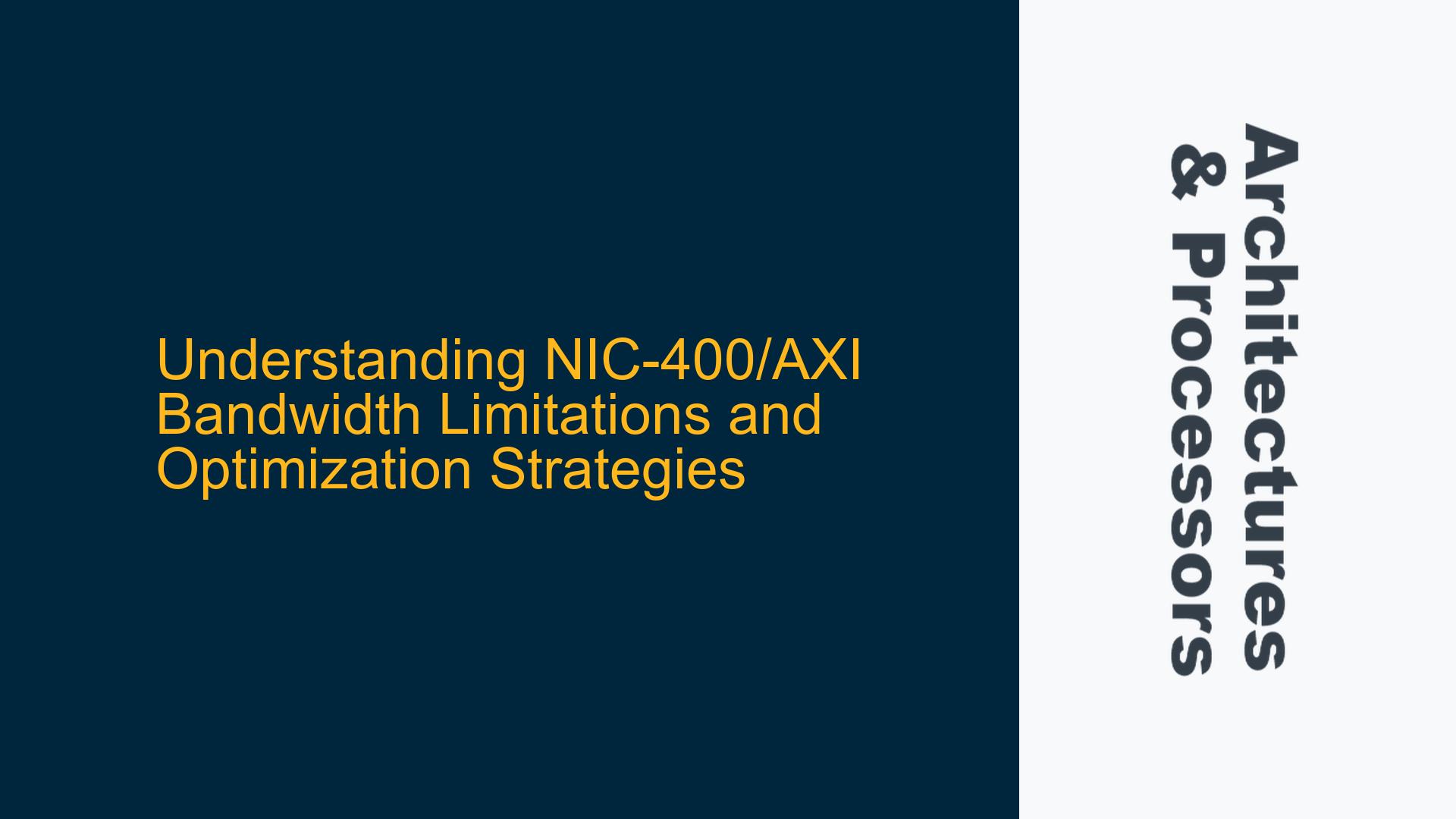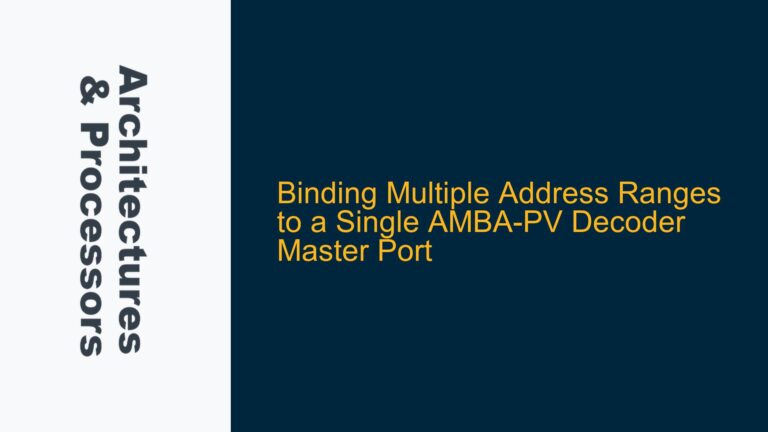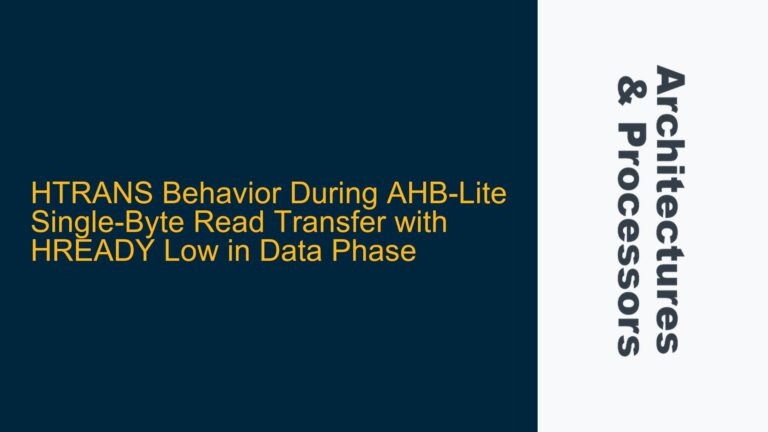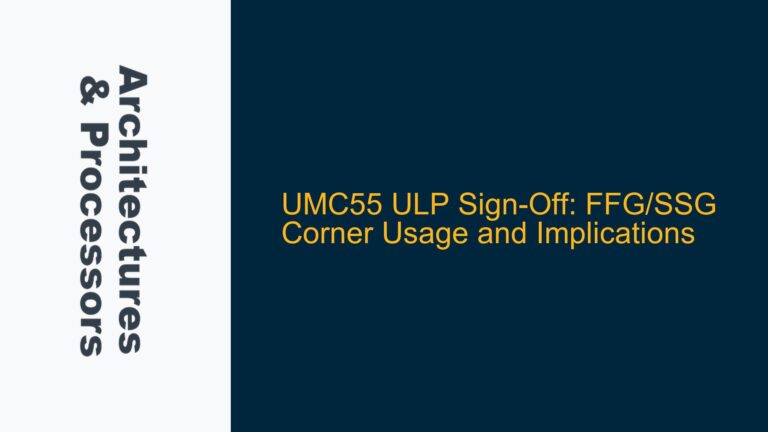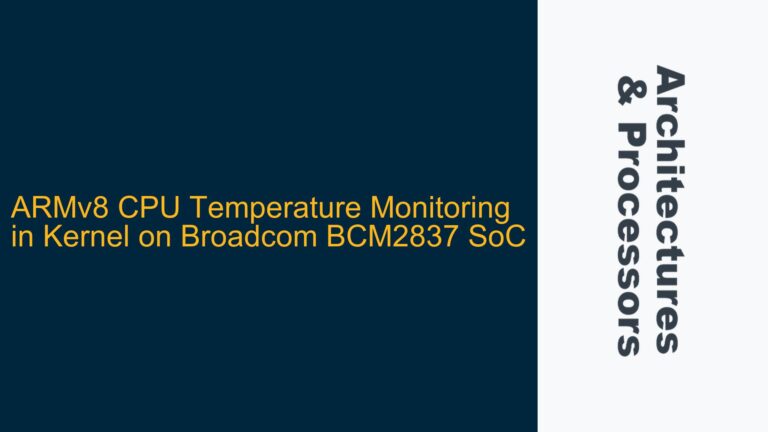NIC-400/AXI Bandwidth Utilization Challenges
The NIC-400 interconnect and AXI (Advanced eXtensible Interface) protocol are widely used in ARM-based systems to facilitate high-performance communication between components such as processors, memory controllers, and peripherals. While the theoretical bandwidth of these interfaces is often advertised based on clock speed and data width, achieving this maximum bandwidth in practice is rarely feasible. The primary challenge lies in the inherent limitations of the protocol, arbitration mechanisms, and system-level constraints that introduce gaps between transactions. These gaps prevent sustained full bus utilization, even in ideal scenarios.
The AXI protocol, while highly efficient, includes overhead such as address and control signaling, response phases, and inter-transaction delays. Additionally, the NIC-400 interconnect, which acts as a network-on-chip (NoC) fabric, introduces its own set of challenges, including arbitration delays, routing overhead, and potential contention between multiple masters and slaves. These factors collectively reduce the effective bandwidth compared to the theoretical maximum.
For example, in a typical AXI write transaction, the address phase and data phase are separated, and there may be gaps between consecutive transactions due to arbitration or protocol requirements. Even if the address and data phases of different transactions are overlapped, the system may not achieve 100% bus utilization due to the aforementioned factors. This is particularly evident in systems with high traffic loads or complex communication patterns, where contention and arbitration delays become more pronounced.
Protocol Overhead, Arbitration Delays, and System-Level Constraints
The inability of NIC-400/AXI to achieve full theoretical bandwidth can be attributed to several key factors. First, the AXI protocol itself introduces overhead through its five independent channels: read address, read data, write address, write data, and write response. Each channel operates independently, and while this allows for high concurrency, it also means that coordination between channels can introduce delays. For instance, a write transaction requires the completion of both the write address and write data phases, and the write response phase must also be acknowledged before the transaction is considered complete. This multi-phase process inherently limits the maximum achievable bandwidth.
Second, arbitration delays within the NIC-400 interconnect can significantly impact performance. The NIC-400 fabric must manage requests from multiple masters, such as CPUs, GPUs, and DMA controllers, and route these requests to the appropriate slaves, such as memory controllers or peripherals. This arbitration process introduces latency, especially in systems with high contention or imbalanced traffic patterns. For example, if multiple masters attempt to access the same slave simultaneously, the NIC-400 must prioritize these requests, which can lead to delays and reduced effective bandwidth.
Third, system-level constraints such as memory controller efficiency, cache coherency requirements, and peripheral response times can further limit bandwidth utilization. For instance, if a memory controller cannot keep up with the rate of incoming requests, it may throttle the AXI bus, introducing gaps between transactions. Similarly, cache coherency protocols, such as those used in multi-core systems, can introduce additional overhead and delays, particularly when maintaining consistency across multiple caches.
Finally, the physical implementation of the system, including factors such as signal integrity, clock skew, and power management, can also impact bandwidth. For example, dynamic voltage and frequency scaling (DVFS) techniques, which are commonly used to optimize power consumption, can introduce variability in clock speeds and signal timing, further complicating efforts to achieve sustained full bus utilization.
Strategies for Maximizing NIC-400/AXI Bandwidth Efficiency
While achieving full theoretical bandwidth with NIC-400/AXI is not feasible, there are several strategies that can be employed to maximize bandwidth efficiency and minimize the impact of protocol overhead, arbitration delays, and system-level constraints. These strategies involve optimizing both the hardware and software aspects of the system.
Optimizing AXI Transaction Patterns
One of the most effective ways to improve bandwidth utilization is to optimize the patterns of AXI transactions. This includes minimizing the gaps between transactions by overlapping the address and data phases of different transactions wherever possible. For example, in a write transaction, the address phase of one transaction can be initiated while the data phase of a previous transaction is still in progress. This requires careful management of the AXI channels and may involve the use of advanced features such as out-of-order transaction completion.
Another optimization technique is to use burst transactions instead of single transfers. Burst transactions allow multiple data items to be transferred in a single transaction, reducing the overhead associated with address and control signaling. For example, an AXI burst transaction can transfer up to 16 beats of data in a single transaction, significantly improving bandwidth efficiency compared to individual transfers.
Reducing Arbitration Delays
To minimize arbitration delays within the NIC-400 interconnect, it is important to carefully configure the arbitration policies and priorities. For example, high-priority masters such as CPUs or real-time peripherals can be given preferential access to the bus, reducing the likelihood of contention and delays. Additionally, the use of multiple NIC-400 instances or hierarchical interconnects can help distribute traffic and reduce contention in systems with a large number of masters and slaves.
Another approach is to use traffic shaping techniques to balance the load across the interconnect. This involves monitoring the traffic patterns and adjusting the rate of requests from different masters to avoid overloading specific slaves or paths within the interconnect. For example, if a particular memory controller is experiencing high contention, the rate of requests to that controller can be temporarily reduced, allowing other transactions to proceed more efficiently.
Addressing System-Level Constraints
System-level constraints such as memory controller efficiency and cache coherency requirements can be addressed through a combination of hardware and software optimizations. For example, the use of high-performance memory controllers with advanced features such as out-of-order execution and bank interleaving can improve the efficiency of memory accesses and reduce bottlenecks. Similarly, optimizing cache coherency protocols to minimize overhead and latency can improve overall system performance.
In software, techniques such as data prefetching and cache line alignment can help reduce the impact of memory access latency and improve bandwidth utilization. For example, prefetching data into the cache before it is needed can reduce the number of cache misses and improve the efficiency of memory accesses. Similarly, aligning data structures to cache line boundaries can reduce the number of cache line fills and evictions, further improving performance.
Leveraging Advanced NIC-400 Features
The NIC-400 interconnect includes several advanced features that can be leveraged to improve bandwidth efficiency. For example, the use of Quality of Service (QoS) mechanisms allows for fine-grained control over the priority and bandwidth allocation for different masters and slaves. This can be particularly useful in systems with mixed traffic patterns, where certain transactions require guaranteed bandwidth or low latency.
Another advanced feature is the use of multiple clock domains within the NIC-400 interconnect. This allows different parts of the interconnect to operate at different clock speeds, reducing the impact of clock skew and improving overall performance. For example, high-speed masters such as GPUs can operate at a higher clock speed, while lower-speed peripherals can operate at a lower clock speed, reducing the likelihood of bottlenecks and improving bandwidth utilization.
Monitoring and Debugging Bandwidth Issues
Finally, it is important to have robust monitoring and debugging tools in place to identify and address bandwidth issues. This includes the use of performance counters and trace tools to monitor the activity on the AXI bus and NIC-400 interconnect. For example, performance counters can be used to measure the number of transactions, the amount of data transferred, and the latency of different transactions. This information can be used to identify bottlenecks and optimize the system accordingly.
Trace tools, such as ARM CoreSight, can provide detailed insights into the behavior of the system, including the timing and sequence of transactions. This can be particularly useful for identifying issues such as contention, arbitration delays, and inefficient transaction patterns. By analyzing this data, it is possible to make informed decisions about how to optimize the system and improve bandwidth utilization.
In conclusion, while the NIC-400/AXI protocol does not provide full theoretical bandwidth due to protocol overhead, arbitration delays, and system-level constraints, there are several strategies that can be employed to maximize bandwidth efficiency. By optimizing transaction patterns, reducing arbitration delays, addressing system-level constraints, leveraging advanced features, and using monitoring and debugging tools, it is possible to achieve high levels of performance and efficiency in ARM-based systems.
